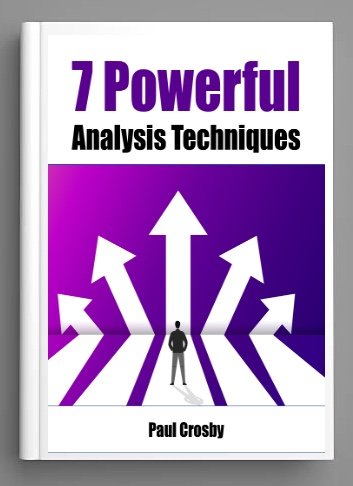Enhancing Agile Outcomes with MOST: A Business Analysis Perspective
In the realm of Agile development, the pursuit of efficiency and effectiveness is paramount. Business analysts, equipped with an array of business analysis techniques, play a crucial role in guiding Agile teams toward achieving optimal results. Among the methodologies at their disposal, the MOST technique stands out for its potential to significantly improve project outcomes and ensure alignment with critical Agile practices such as User Story Mapping (USM), Product Backlog Refinement, and Sprint Planning. This article explores how business analysts can leverage MOST alongside their business analyst techniques to bolster systems analysis and Agile development processes.
The Convergence of MOST and Agile Development
The MOST technique, encapsulating Mission, Objectives, Strategies, and Tactics, offers a structured approach that aligns seamlessly with the Agile framework. This synergy is particularly beneficial when integrated with systems analysis, enhancing the clarity and direction of Agile projects.
- Mission: The mission statement provides a clear, overarching goal that guides the entire Agile project. For business analysts, this aligns with the fundamental business requirements and strategic vision, ensuring that every aspect of the Agile process contributes to the broader business goals.
- Objectives: Setting specific, measurable objectives is a critical business analyst technique. In Agile, these objectives frame the expected outcomes of sprints and releases, guiding the team's efforts and ensuring they align with the project's mission.
- Strategies: Strategies in the MOST framework align with the methodologies and practices adopted during systems analysis and Agile development. They provide a roadmap for achieving objectives, guiding the Product Backlog Refinement and Sprint Planning processes.
- Tactics: Tactical actions are the day-to-day tasks and user stories that Agile teams execute. Business analysts use these to ensure that strategies are effectively translated into actionable steps, driving the project toward its objectives.
Leveraging MOST for Enhanced Agile Practices
Alignment with User Story Mapping (USM): User Story Mapping is a fundamental Agile practice that benefits greatly from the structured approach of MOST. Business analysts can use the mission and objectives defined through MOST to guide the creation of a user story map that not only reflects the user's journey but also aligns with the project's strategic goals.
Streamlining Product Backlog Refinement: The refinement of the product backlog is a critical process where business analysis techniques play a vital role. Through MOST, business analysts can ensure that each backlog item aligns with the project's strategic objectives, making the refinement process more focused and efficient.
Optimizing Sprint Planning: Sprint Planning is another area where the MOST technique can add significant value. By setting clear objectives and defining strategies for each sprint, business analysts can help ensure that sprint planning is not only about task allocation but also about strategic alignment and goal orientation.
Enhancing Systems Analysis in Agile: Systems analysis is integral to understanding project requirements and designing effective solutions. The structured approach of MOST, combined with business analyst techniques, can enhance systems analysis by providing a clear framework for aligning technical requirements with business goals.
The Strategic Advantage of MOST in Agile
By integrating the MOST technique with Agile development, business analysts can provide teams with a clear strategic framework that guides every aspect of the project. This not only ensures alignment with the business's strategic objectives but also enhances collaboration, focus, and motivation within the Agile team. Moreover, the structured approach of MOST aids in navigating the complexities of systems analysis, ensuring that technical solutions are both effective and strategically aligned.
Leveraging MOST
The integration of the MOST technique into Agile development processes represents a powerful convergence of business analysis techniques and Agile methodologies. By leveraging MOST, business analysts can enhance systems analysis, streamline Agile practices, and ensure that projects are strategically aligned with business goals. As Agile continues to evolve, the role of business analysts in employing methodologies like MOST will be crucial in driving projects to successful outcomes, reinforcing the value of strategic alignment in Agile development.
Unlock your full potential as a Business Analyst with our game-changing online course! Tailored for the analytical minds eager to lead, innovate, and transform, this course is your gateway to mastering the most effective business analysis techniques. Whether you're looking to excel in Agile, shine in Waterfall, or innovate in uncharted territories, our expert-led curriculum is designed to elevate your skills, boost your career, and make you the go-to strategist in any room. Join us, and become the catalyst for change your organization didn't know it needed!
Ready to up your business analyst game? Let’s explore 7 powerful techniques that are shifting the business analysis landscape with expert insight from business analysis pros.



